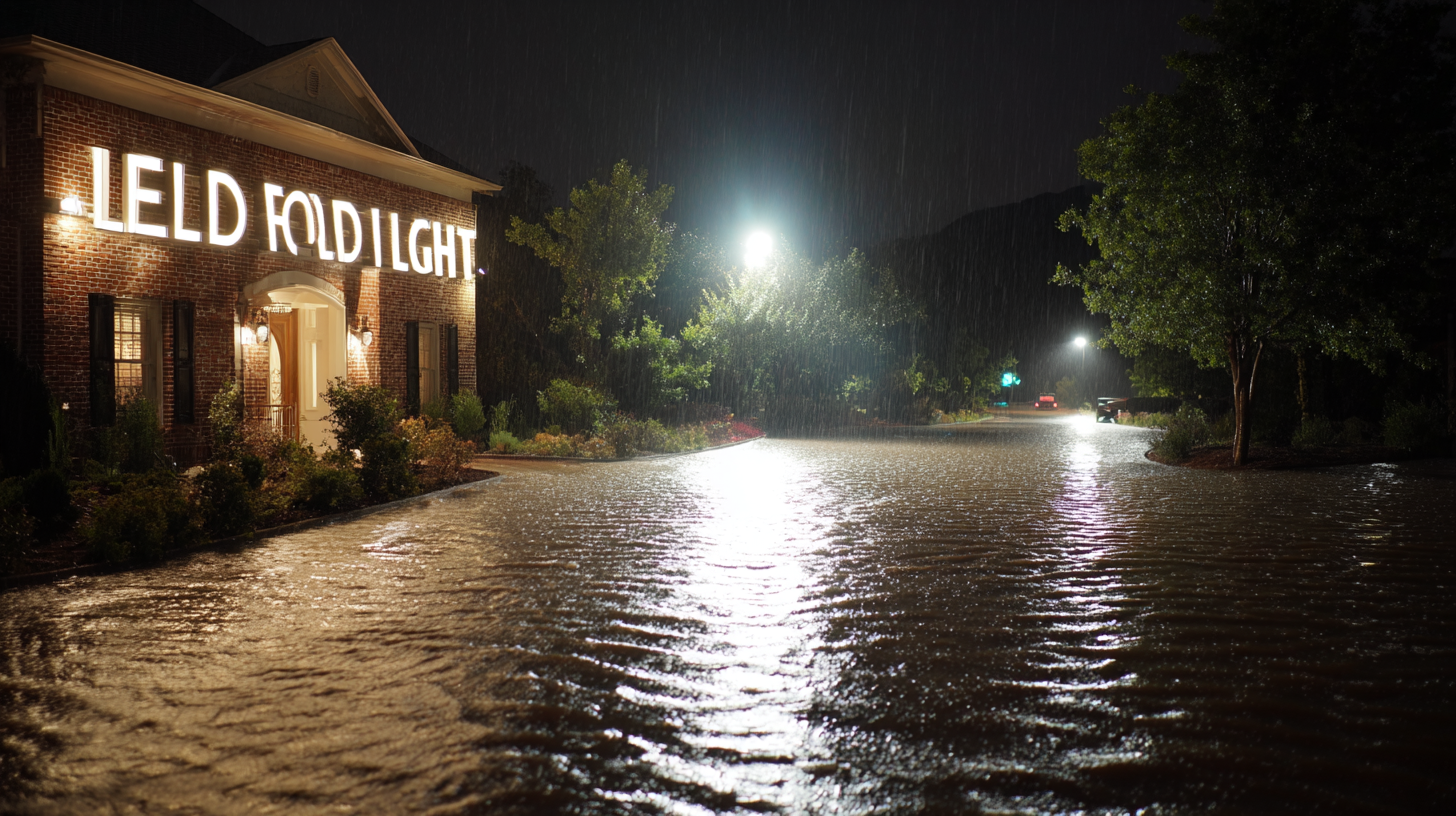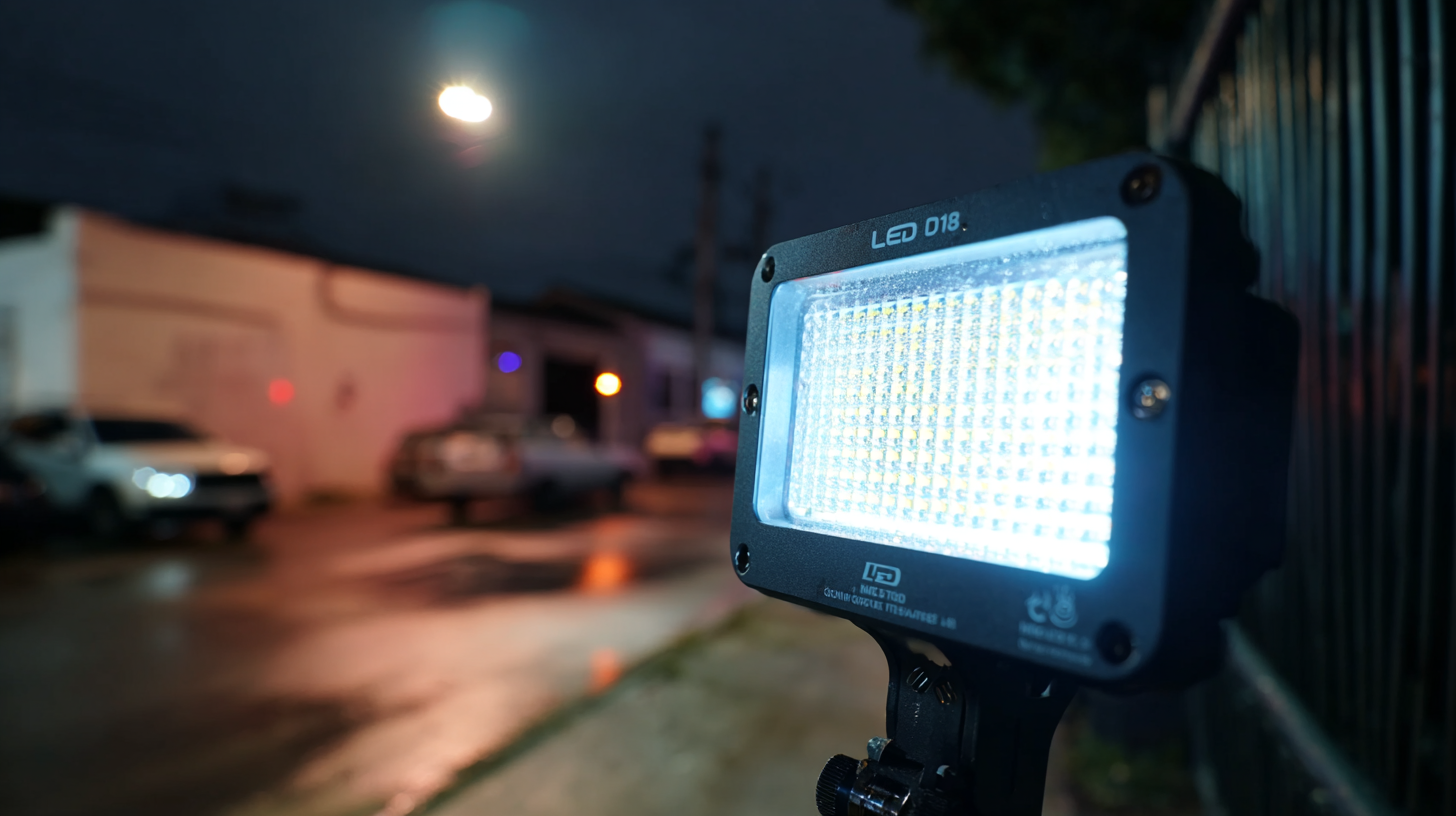Exploring Best LED Flood Light Alternatives for Efficient Outdoor Lighting Solutions
In the quest for effective outdoor lighting solutions, LED flood lights have gained immense popularity due to their energy efficiency and bright illumination. However, as technology evolves, consumers are presented with a myriad of alternatives that promise equally effective lighting while potentially offering different advantages such as cost-efficiency, ease of installation, or unique aesthetic appeal. This blog delves into the various alternatives to LED flood lights, comparing their features, durability, and overall performance to help homeowners and businesses make informed decisions.

Whether you are looking to illuminate your backyard, enhance security around your property, or create a welcoming atmosphere, understanding the diverse options available will empower you to select the best lighting solution tailored to your specific needs. Join us as we explore the best LED flood light alternatives on the market today.
Exploring the Growth of LED Flood Light Alternatives in the Outdoor Lighting Market by 2025
The outdoor lighting market is set to experience a significant transformation by 2025, especially with the escalation of LED flood light alternatives. According to a recent report by MarketsandMarkets, the global outdoor lighting market is projected to reach USD 30.5 billion by 2025, growing at a CAGR of 6.8% from 2020. This growth is largely driven by the increasing adoption of energy-efficient lighting solutions, which have become essential for both residential and commercial applications. As consumers become increasingly eco-conscious, the demand for alternatives that not only offer energy savings but also enhance aesthetic appeal is on the rise.
Among the various alternatives to traditional LED flood lights, solar-powered lights are gaining traction. Research by Grand View Research indicates that the solar lighting market is expected to grow at a remarkable CAGR of 20.5% through 2025. This shift is attributed to advancements in solar technology, which have led to more efficient energy conversions and longer-lasting products. Moreover, regulatory trends favoring renewable energy incentives further support this growth, pushing both manufacturers and consumers towards adopting these sustainable options for outdoor illumination.
Key Factors Driving the Shift from Traditional Lighting to LED Flood Lights
The transition from traditional lighting solutions to LED flood lights is largely driven by several key factors that highlight the advantages of LED technology. First and foremost, energy efficiency plays a significant role. LED flood lights consume significantly less power than incandescent or halogen bulbs, resulting in reduced electricity bills for homeowners and businesses alike. With advancements in LED technology, these lights can produce the same amount of illumination as their traditional counterparts while using a fraction of the energy.
Another critical factor is the longevity of LED flood lights. Unlike traditional lighting, which often requires frequent replacements, LED lights boast an impressive lifespan, sometimes exceeding 25,000 hours. This reduced need for maintenance not only saves on replacement costs but also minimizes the environmental impact associated with disposing of burned-out bulbs. Additionally, LED flood lights are designed to withstand harsh weather conditions, making them ideal for outdoor use in various settings, from residential gardens to commercial landscapes.
Furthermore, the ability to provide adjustable brightness and color temperature allows for versatile usage in outdoor environments. Users can customize their lighting solutions to suit specific activities, whether it's a backyard gathering or illuminating a sports field. These combined benefits make LED flood lights a compelling choice for those looking to enhance their outdoor lighting solutions.
Exploring Best LED Flood Light Alternatives for Efficient Outdoor Lighting Solutions
This chart illustrates the energy consumption of various outdoor lighting solutions, highlighting the efficiency of LED flood lights as a more sustainable alternative to traditional lighting options.
Comparative Analysis: LED Flood Lights vs. Solar and Halogen Options
When considering outdoor lighting solutions, LED flood lights, solar lights, and halogen options each have unique attributes worth examining.
 LED flood lights are celebrated for their energy efficiency and long lifespan, significantly reducing energy costs compared to traditional halogen bulbs. They emit a bright, focused light ideal for illuminating large outdoor areas. However, the initial investment may be higher than halogen options.
LED flood lights are celebrated for their energy efficiency and long lifespan, significantly reducing energy costs compared to traditional halogen bulbs. They emit a bright, focused light ideal for illuminating large outdoor areas. However, the initial investment may be higher than halogen options.
Solar lights, on the other hand, harness renewable energy, making them an eco-friendly alternative. They require minimal installation and come with the benefit of no electricity bills. However, their performance can be influenced by weather conditions, and they may not provide as bright a light output as LEDs.
Tip: For optimal outdoor illumination, consider combining different types of lighting. Use LED flood lights for security and general area lighting, while strategically placing solar lights along pathways for added visibility and charm. Additionally, for those on a tight budget, halogen lights can serve as a temporary solution until you invest in more efficient options like LEDs. Always evaluate your specific lighting needs and the environmental conditions of your space before making a decision.
Tips for Choosing the Right LED Flood Light Alternative for Your Needs
When considering LED flood light alternatives for outdoor spaces, it's crucial to assess your specific needs to ensure the best fit. One key factor is the lumen output; according to the Illuminating Engineering Society, an average LED flood light provides between 3000 to 7000 lumens, suitable for various applications ranging from security to recreational lighting. Selecting a flood light with the appropriate lumen output can significantly enhance visibility and safety in your outdoor areas.
Another important consideration is the color temperature of the lighting. A report by the U.S. Department of Energy suggests that a color temperature between 3000K and 4000K offers a balance between warmth and brightness, making it ideal for outdoor environments. Additionally, features such as adjustable beams and energy efficiency ratings play a vital role in your selection process. Energy Star rates products based on their performance, and choosing certified alternatives can reduce energy consumption by up to 75%, providing not only effective illumination but also long-term savings on your electricity bill.

Future Trends: Innovations in Outdoor Lighting Technologies Beyond 2025
The future of outdoor lighting technologies is rapidly evolving, especially with the rise of innovations that promise to enhance efficiency and sustainability. By 2025, we can expect to see a surge in smart lighting solutions equipped with advanced sensors and connectivity features. These technologies will not only enable better control over lighting but also adapt in real-time to environmental conditions, significantly reducing energy consumption.
Tips: When selecting outdoor lighting, consider opting for fixtures with integrated smart technology. These lights can automatically adjust brightness based on the time of day or the presence of people, optimizing energy use and enhancing security. Additionally, look for options that utilize solar power or energy-efficient LED technology to further minimize your environmental footprint.
In addition, the integration of renewable energy sources will likely become a standard practice in outdoor lighting design. Innovations such as solar-powered LED floodlights will pave the way for greener alternatives that require less maintenance and reduce dependence on the grid. The future is bright for outdoor lighting, promising greater efficiency and intelligent systems that cater to the needs of homeowners and businesses alike.
Tips: Research local regulations regarding solar installations and check for available incentives or rebates. This can significantly lower the upfront costs of transitioning to smart, environmentally friendly outdoor lighting solutions.
